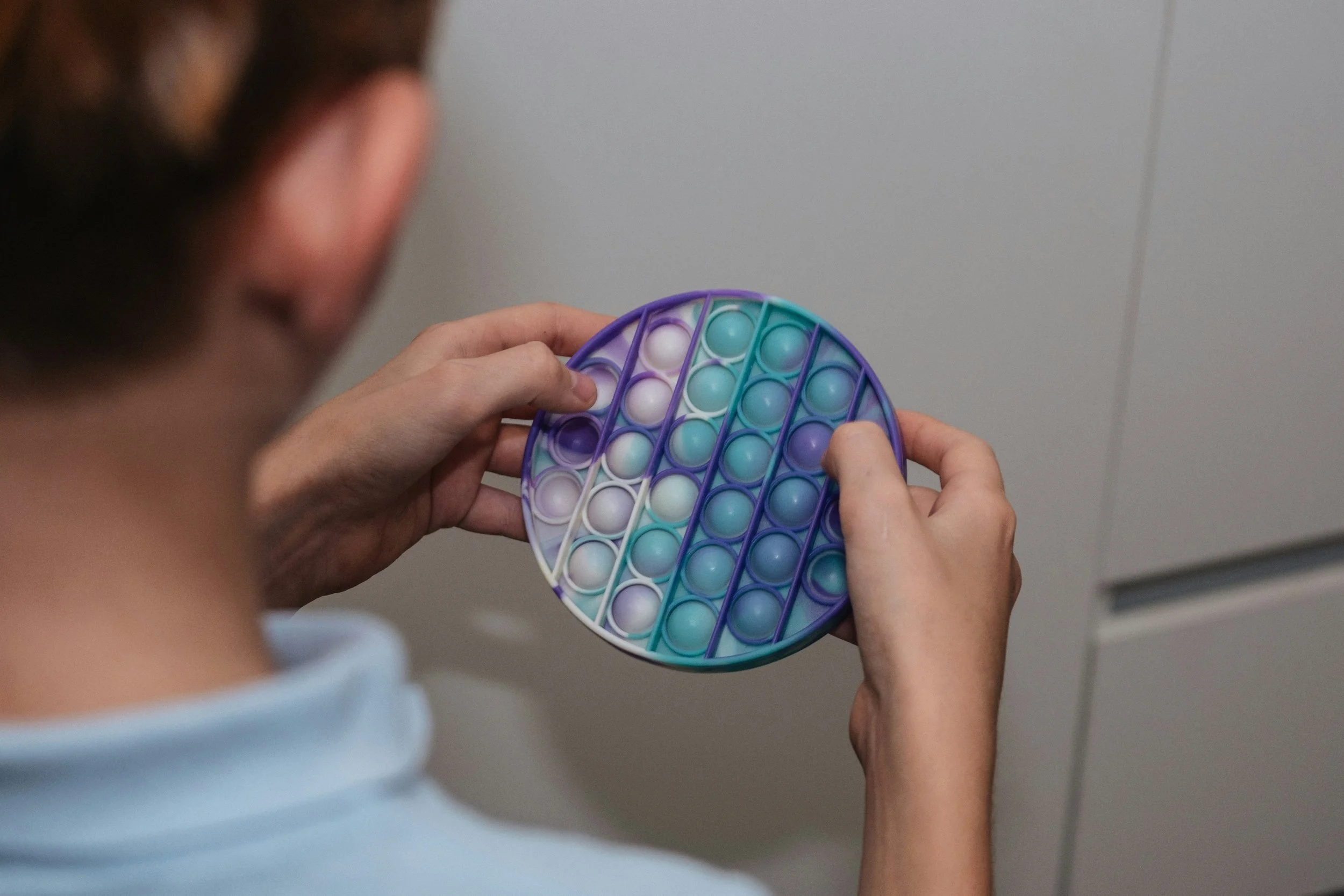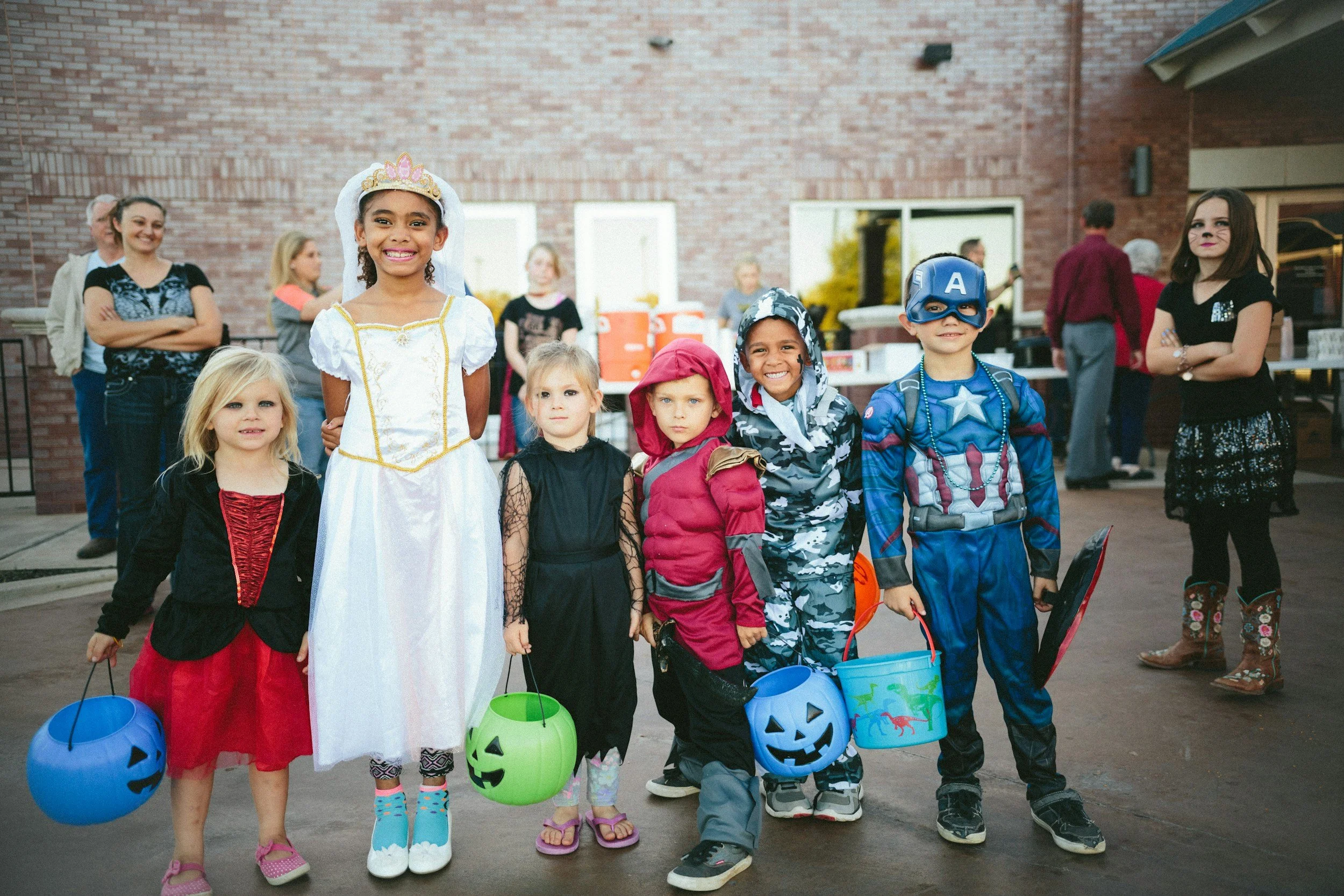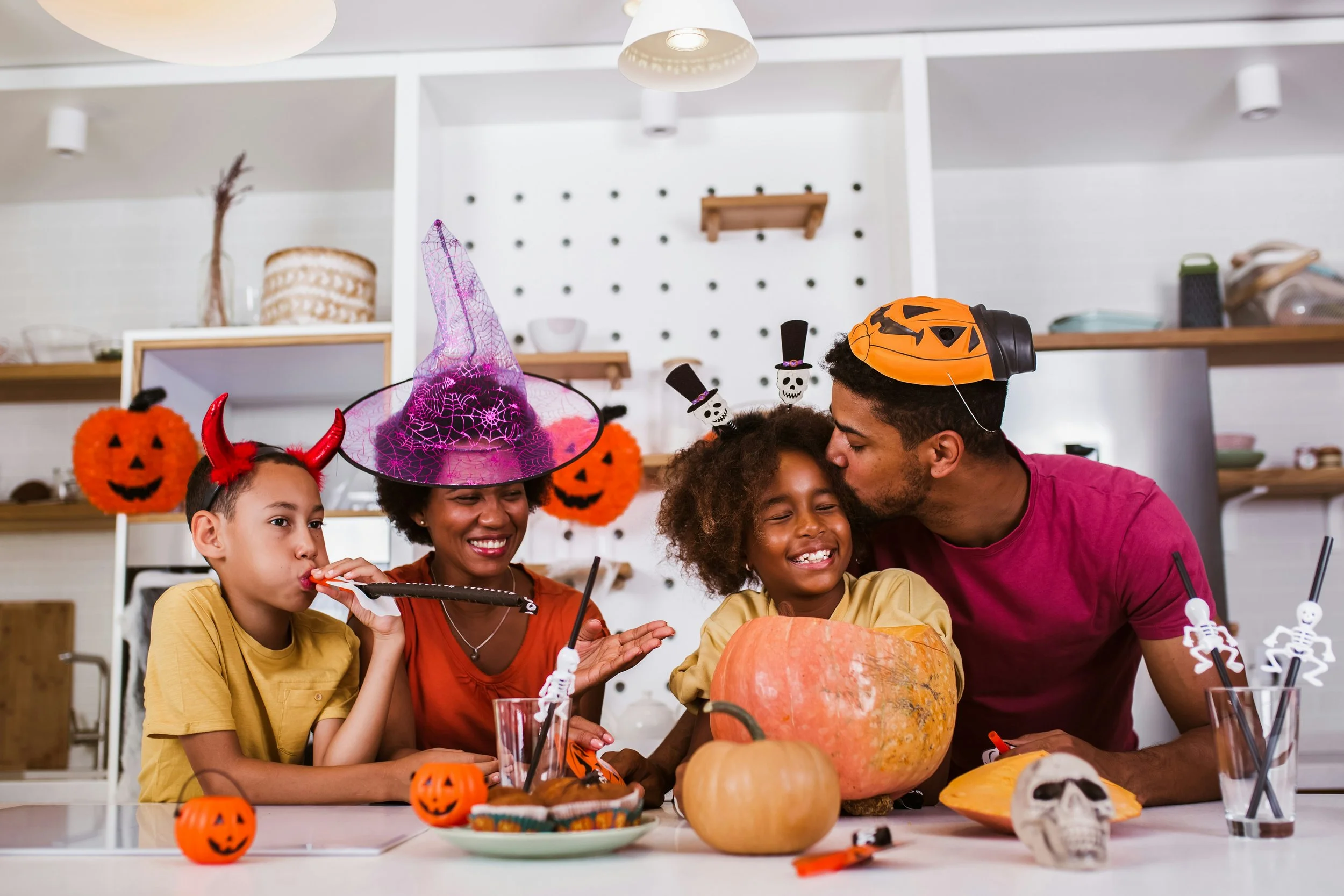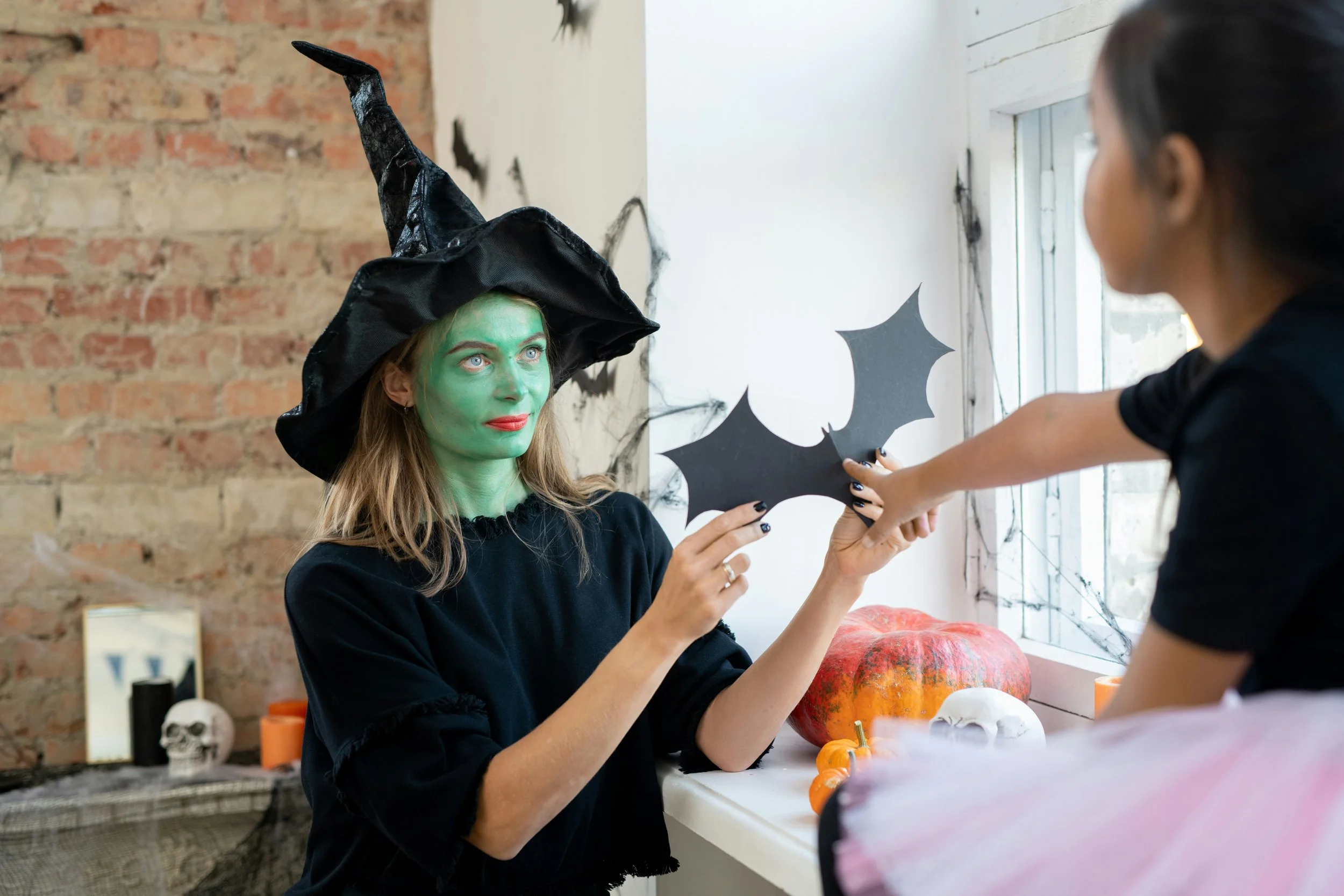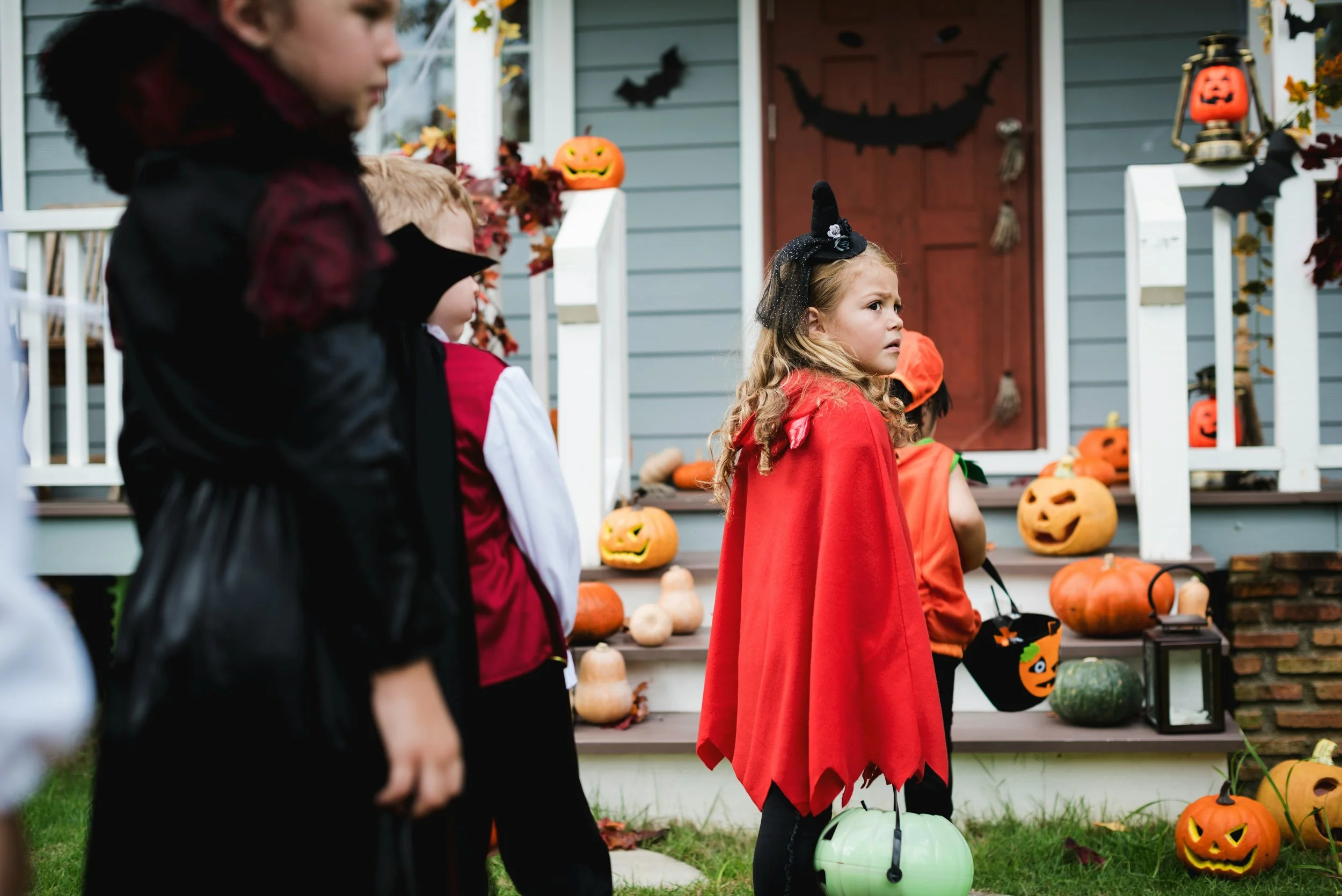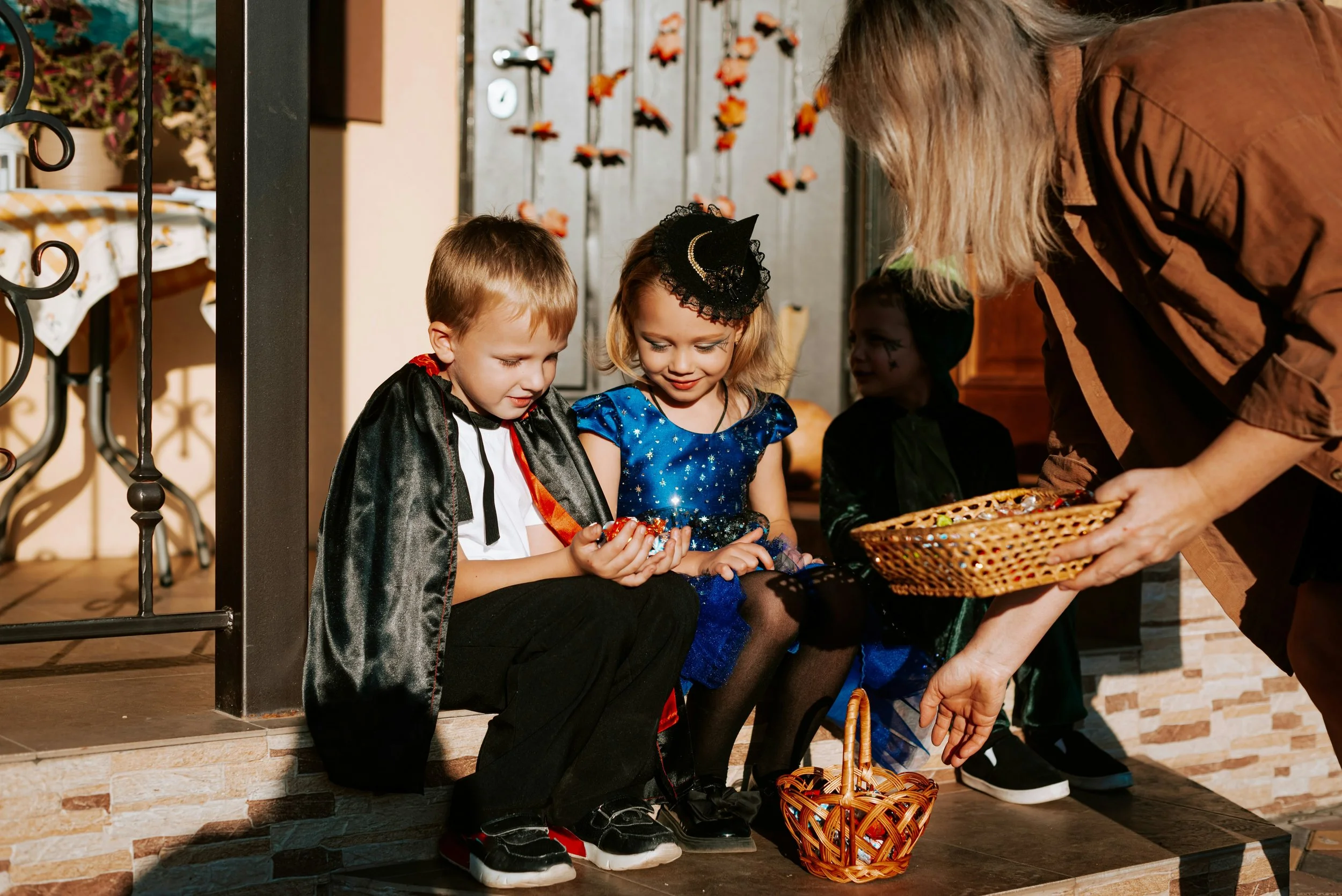Preparing Autistic Children for a Sensory-Friendly Halloween
Support your autistic child this Halloween with our actionable tips. Help them navigate social interactions and sensory triggers smoothly and confidently.
Halloween can be exciting, but for many autistic children, it also brings unique challenges that require thoughtful preparation and support. At Colorado Behavior and Learning Group (CBLG), we recognize the importance of understanding these sensory and social stressors. Our collaborative wraparound care model helps families anticipate those moments and build strategies that support their child’s comfort, safety, and ability to participate in a way that works for them.
Understanding Halloween Challenges for Autistic Children
From costume materials to crowded front porches, many traditional Halloween activities can create unexpected stress for neurodiverse kids. By identifying common triggers ahead of time, we can tailor supports to reduce anxiety and increase participation—on their terms.
Sensory Overload is Common
For children with sensory sensitivities, Halloween can be overstimulating. Flashing lights, loud noises, unfamiliar textures, and strong smells can all feel overwhelming. Costumes may be itchy or restrictive. Decorations like animatronics or fog machines might feel threatening. These are not just annoyances—they can interfere with a child’s ability to feel safe or stay regulated.
Social Situations Can Be Stressful
Trick-or-treating requires a series of quick, often high-pressure interactions with people the child may not know. Saying "trick or treat," accepting candy, thanking a stranger, or even making eye contact can be emotionally taxing. For some children, unspoken rules during parties—like taking turns or sharing space—can cause frustration or confusion without clear guidance or practice beforehand.
Change and Unpredictability May Increase Anxiety
Halloween breaks routines. Normal clothing is swapped for costumes. Familiar spaces are replaced with decorated houses or social gatherings. For autistic children who depend on predictability, these changes can spike anxiety, especially when plans change or unexpected challenges arise during the evening.
It’s not about avoiding Halloween—it’s about honoring the child’s needs while creating space for participation that feels safe and joyful. At CBLG Clinics, we support families in building practical strategies rooted in Applied Behavior Analysis (ABA), customized to each child’s profile—including safe, structured, and flexible ways to approach Halloween events.
Every child deserves the chance to enjoy Halloween in a way that feels good to them. The first step is understanding what might get in the way.
Preparing in Advance to Create a Comfortable Experience
Preparation gives autistic children the structure and predictability they often rely on to feel safe. At CBLG Clinics, our approach starts with individualized planning built around each child’s sensory profile, communication style, and emotional needs. When families take time to prepare early and intentionally, Halloween becomes less daunting and more manageable—for both the child and the caregivers supporting them.
Use Visual Schedules and Social Stories
Visual tools help clarify what to expect. A step-by-step visual schedule of Halloween day (or night) routines can help children anticipate what’s coming. Social stories are another helpful resource—brief, tailored narratives that walk the child through specific events or social situations, such as putting on a costume, going to a decorated house, or saying “trick or treat.” These tools support comprehension and reduce anxiety about the unknown.
Talk Through Expectations Early and Often
Discuss Halloween routines gently and gradually. Begin several days—or even weeks—in advance. Break down what will happen, when it will happen, and who will be there. Use simple, consistent language and keep the focus on clarity, not pressure. Be open to adjusting your plans based on your child’s reactions and tolerance levels as you talk through them.
Get Comfortable with Costumes and Decorations
Costumes can feel unfamiliar or uncomfortable. Start by introducing pieces slowly. Let your child touch the fabric, try on parts of the costume in short sessions, or choose alternatives like themed pajamas or favorite-character T-shirts that mimic dressing up without triggering discomfort. The same goes for decorations—if spooky props cause distress, scale back at home or introduce them gently during daylight hours with your child at your side.
Create a Personalized Halloween Plan
Every child has different limits. Some may enjoy one-on-one trick-or-treating for a few houses. Others might prefer handing out candy from home. Build a plan that fits your child’s unique preferences. Include practical steps like:
Setting a time limit for activities
Allowing costume “practice days” beforehand
Identifying “quiet stop points” or exit strategies
Preparing a sensory backpack or tool kit
Predictability reduces stress. Helping your child know what to expect—and giving them choices and control along the way—can make Halloween feel more approachable. At CBLG, we help families build structured routines for holidays that honor each child’s readiness, boundaries, and sense of control.
Sensory-Friendly Halloween Tips
At CBLG Clinics, we know that sensory preferences aren’t just quirks—they’re central to helping autistic children feel safe and balanced. Our care teams work closely with families to build sensory-friendly tools into everyday planning, especially during high-stimulation events like Halloween.
Adapt Costumes for Comfort
Costumes can be a major source of discomfort. Heavy fabrics, tight seams, tags, or masks can quickly overwhelm a child who is sensitive to touch or movement. The goal isn’t to force dress-up—it’s to find something that fits the child’s comfort level while still offering a chance to participate. Consider these options:
Choose soft, tag-free clothing or pajamas with a Halloween theme
Opt for loose-fitting garments in breathable fabrics
Skip masks, makeup, or hats if they irritate your child’s skin or senses
Let your child try on each part of the costume individually with the option to remove it at any time
Comfort comes before the photo. If your child feels confident in their outfit, their participation is more likely to be positive.
Plan for Sensory Supports During Events
Public Halloween activities often bring unexpected noise, lights, or smells. Preparing for this ahead of time can reduce overload and help your child regroup if needed. Keep a portable sensory kit handy with the tools your child already uses during stressful moments. This might include:
Noise-cancelling headphones
Fidget items or chewy jewelry
Weighted lap pads or hand-held squeezables
Sunglasses or dimming glasses for bright light exposure
Establish check-in points during the evening where your child can communicate how they’re feeling and access a calming space if needed.
Choose the Right Setting
Not all Halloween events are created equal. If your child becomes overstimulated easily, pick quieter times and less crowded areas. Neighborhood trick-or-treating during early evening hours, indoor “trunk or treat” events, or private family parties might offer a gentler environment. Be ready to pause or end the activity if your child shows signs of distress..
Provide Breaks (and Exit Options)
A successful night doesn’t always mean completing every stop. Sensory breaks are just as important as participation. Build in time for rest between homes, bring a familiar item from home, or designate a calm space like a parked car or stroller where your child can regroup. Have a backup plan in case the activity becomes too overwhelming.
It’s not about pushing through—it’s about honoring your child’s experience and flexibility. At CBLG, we partner with parents to build supportive, practical strategies that match their child’s sensory needs while still making space for joy.
Encourage Interaction Without Forcing It
Some children enjoy social time during Halloween. Others may prefer to observe or participate in a quieter way. Respect their pace. Offering alternatives—like handing out candy instead of trick-or-treating—provides social inclusion with less pressure. Encourage peers and siblings to model appropriate greetings or stand with your child during interactions to offer confidence and support.
Every child communicates differently. The goal isn’t to make them fit the moment, but to shape the moment so they feel safe showing up just as they are. At CBLG, we collaborate with caregivers to create reliable supports that meet your child where they are—one interaction at a time.
Creating Positive Family and Community Experiences
Halloween isn’t only about costumes and candy—it’s also a chance to strengthen family connections and build more inclusive communities. When those around your child understand and support their needs, Halloween becomes a meaningful, low-pressure experience that the whole family can enjoy. At Colorado Behavior and Learning Group (CBLG), we encourage families to expand their network of support and involve others in collaborative ways that respect and celebrate the child's unique journey.
Involve Siblings and Extended Family in Supportive Roles
Include siblings and close relatives in the Halloween planning process. When they understand the sensory, social, or emotional challenges that may come up, they can play an active, empathetic role in supporting your child. Consider giving siblings a specific responsibility—like walking hand-in-hand, interpreting a nonverbal signal, or initiating greetings during trick-or-treating. When everyone in the family feels like part of the plan, the evening runs more smoothly and with greater teamwork.
Build a Trusted Support Network for the Night
If multiple caregivers are involved, clarify everyone’s role ahead of time. Assign one person to monitor for signs of sensory overload, another to carry the sensory toolkit, and someone else to assist with communication needs. Proactive, team-based planning makes it easier to adapt in the moment without overwhelming any one adult or child.
Encourage Inclusive Neighborhood Participation
Reach out to neighbors ahead of time to let them know about your child’s needs (if you feel comfortable doing so). Many people want to support but simply don’t know how. You might share a communication card your child will be using or ask neighbors to keep decorations child-friendly. Some families display a visible clue—like a teal pumpkin or sensory-friendly symbol—to show that low-stimulation zones or participation modifications are welcome.
Inclusion starts with awareness. Simple conversations with compassionate neighbors can go a long way in helping your child feel safe and seen.
Create a Positive, Low-Pressure Atmosphere
If Halloween celebrations at home feel safer or more enjoyable, lean into that environment. Host a calm family night with lights off, treat bags inside, or a quiet movie viewing instead of door-to-door trick-or-treating. Let your child lead with their preferences. Offer choices such as:
Decorating pumpkins without carving
Handing out candy in costume from a distance
Doing themed crafts or games indoors
Watching a favorite non-scary movie with Halloween snacks.
Participation doesn’t have to look like everyone else’s version of Halloween. What matters is that your child feels safe, respected, and included.
At CBLG Clinics, we walk alongside families to create community experiences that affirm rather than pressure, and to build family bonds that reinforce support during every celebration. With the right support network in place, Halloween becomes more than an event—it becomes a shared success story.
Local and National Resources That Can Help
Begin with supports tailored to your child’s specific needs. That may include working with a Board Certified Behavior Analyst (BCBA) to develop Halloween-focused social stories or requesting guidance from your child’s existing care team. Local autism organizations often provide holiday toolkits or sensory-friendly event directories during October. For broader support, national groups may offer downloadable planning templates or visual aids for nonverbal communication.
Review tools such as visual schedules, cue cards, and social narratives from trusted providers
Use caregiver webinars or support groups to share strategies and feel less isolated
Coordinate with schools or IEP teams to help align social goals with Halloween participation opportunities
At CBLG Clinics, families gain access to visual supports and individualized behavior planning tools tailored to seasonal transitions, including Halloween. These tools are designed to be usable across environments—at home, in school, and out in the community.
We’re here to help, every step of the way. Contact Colorado Behavior and Learning Group to learn more about ABA Therapy, wraparound planning, and caregiver education that supports real progress—during Halloween and beyond.










